11 Companion Plants for Roses (With Pictures)
-
Pete Ortiz
- Last updated:
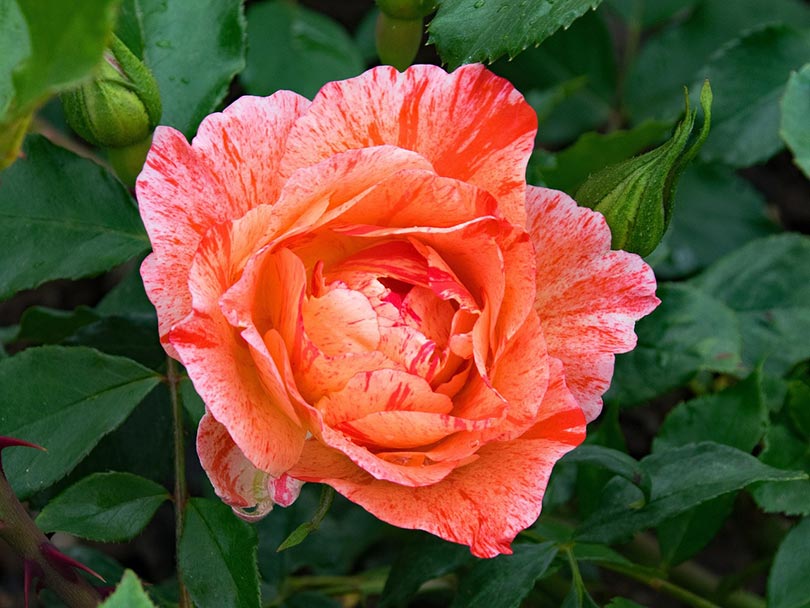
For many years, farmers have been utilizing companion planting to bring out the best characteristics of their food crops. Companion paring can also be used in a home garden to complement the rose bed. As beautiful as their blooms may be, roses can be quite challenging to grow. Fortunately, you can pair them with other plants to complement their texture, and make your garden more aesthetically appealing.
Companion planting a rose garden can help keep pests away, attract beneficial insects, and hide the bare canes of the plant as it grows taller. Companion plants also help roses make up for any weaknesses as they grow. However, as the roses and the companion mingle below and above the roses, they should not compete for resources.
If you are wondering what plants make a good companion for roses, we have compiled a list of annuals and perennials that can complement your rose bushes. This article will also highlight the importance of growing roses with companion plants and tips you should consider for optimum results. Read on to learn more.
 Why Plant Roses With Companion Plants?
Why Plant Roses With Companion Plants?
Before we highlight which companion plants are best for roses, you should first understand why companion plants are planted next to these delicate flowers.
- Add flower forms, contrasting textures, and color to your rose bushes
- To make a rose garden more appealing especially after the rose stems have leafed out when resting between blooms and during the off-season
- To layer the scent of the roses
- To create the structure of your garden
- To fill up a garden and cover up the ground
- To add rhythm, height, and movement
- To hide defoliation and any blemishes on the roses as the season progresses
- To attract various beneficial insects to prey on aphids on the roses
- Prevent monoculture that promotes the spread of pests and diseases
- To support birds, bees, butterflies, and other wildlife
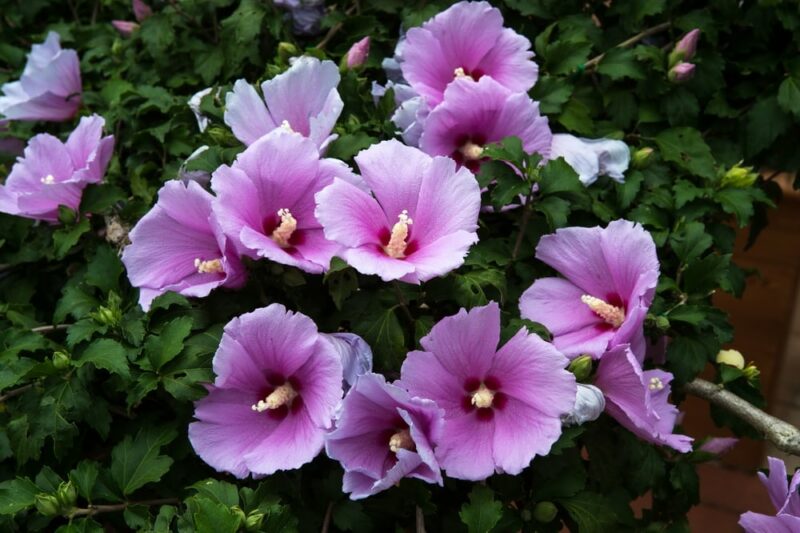
Which Plants Make the Best Companions for Roses?
As you may have gathered by now, companion plants are not planted alongside roses for just aesthetic appeal. You should also consider the needs of each plant, your climate, and the ideal growing conditions.
Since roses thrive in well-draining soil and under direct sunlight, you should also match the conditions to that of companion plants. Furthermore, the plants should be at least a foot apart. However, be cautious not to combine roses with aggressive or greedy plants that may take up a disproportionate amount of nutrients and water. This is because they will fight for resources and possibly overpower your roses.
Other than that, you can experiment with different plant species that tickle your fancy. Most gardeners prefer going for modest plants that will allow their roses to shine, but you can also go for equally majestic and beautiful companions so long as your roses will be able to thrive among them.
Here is a list of garden plants that have the same growing conditions as roses that can be beneficial to rose gardens as companion plants.
The Top 11 Companion Plants for Roses
1. Lavender (Lavandula)
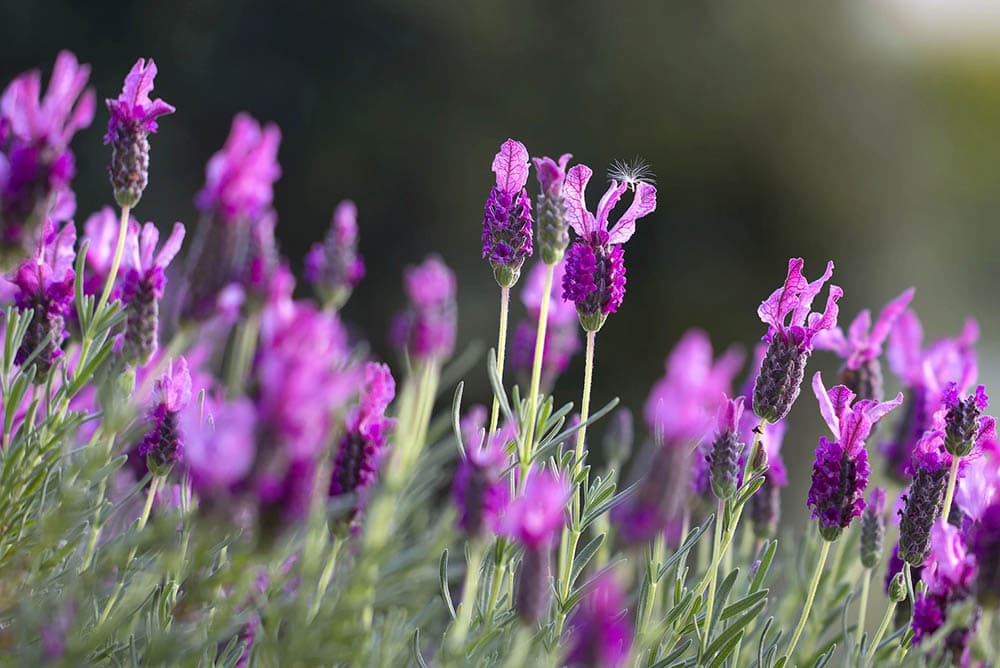
- USDA Hardiness Zone: 5–9
- Size: 2–3 feet tall, 2–4 feet wide
For many years, roses and lavenders have been a classic pair in home gardens, often planted near each other. When coupled, the lavender short purple spires usually offset the cupped flowers and tall stems of roses perfectly. Besides that, these two plant species thrive in the same conditions. Moreover, some rose species like the floribunda and shrub roses thrive in well-draining soils and direct sun glare just like lavender.
Lavender plants also avail some benefits to your rose garden. The plant scent is known to discourage rabbits and deer from devouring the plants. It also attracts bees for pollination purposes. Some gardeners even argue that lavenders attract and host aphids, thus protecting your roses from the harmful effects of this pest.
Lavenders are also easy to care for and maintain, needing minimal watering to thrive. If you opt for this combination, try to get colors that blend well with each other. Usually, pale lavenders go well with deep reds and pastel roses.
2. Alyssum (Lobularia maritima or Alyssum maritimum)
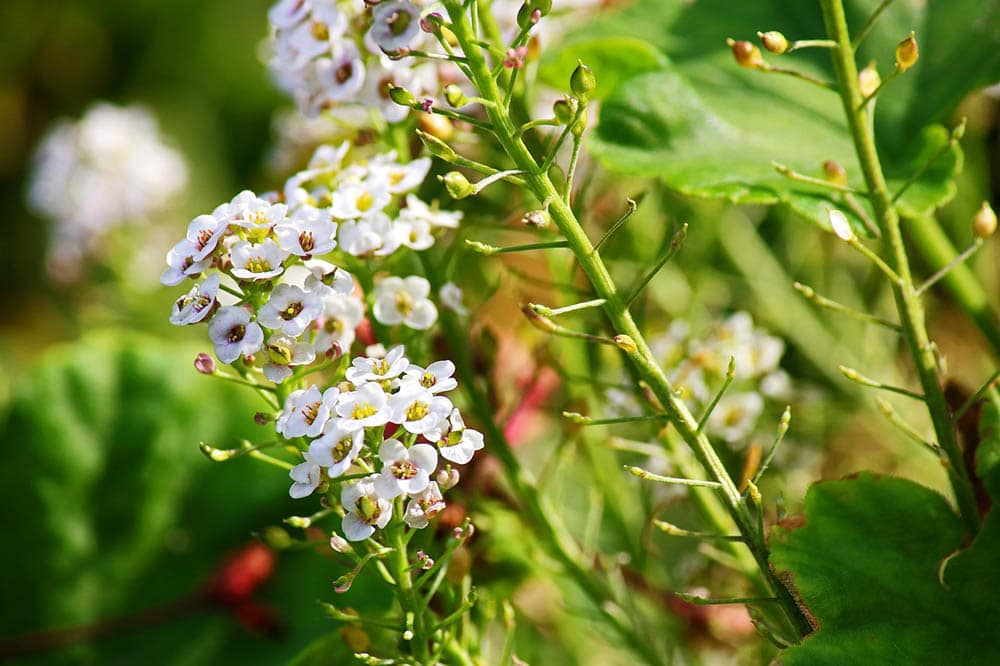
- USDA Hardiness Zone: 5–9
- Size: 2 to 12 inches tall, 8 to 12 inches wide
Alyssum tends to grow low on the ground, spreading through to create a natural carpet of soft-colored flowers. When combined with roses, your garden will look way more appealing. Like lavender, Alyssum thrives in well-draining soil and hardiness zones 5–
However, these plant species don’t do well under direct sun, especially in predominantly hot climates. But you can combine it with roses even if you live in hot areas- plant them in shadier areas of your yard. Alyssum also produces a sweet smell that is almost similar to that of honey. So, once paired with your roses, your garden will have that irresistible smell usually found in flower shops.
3. Foxgloves (Digitalis)
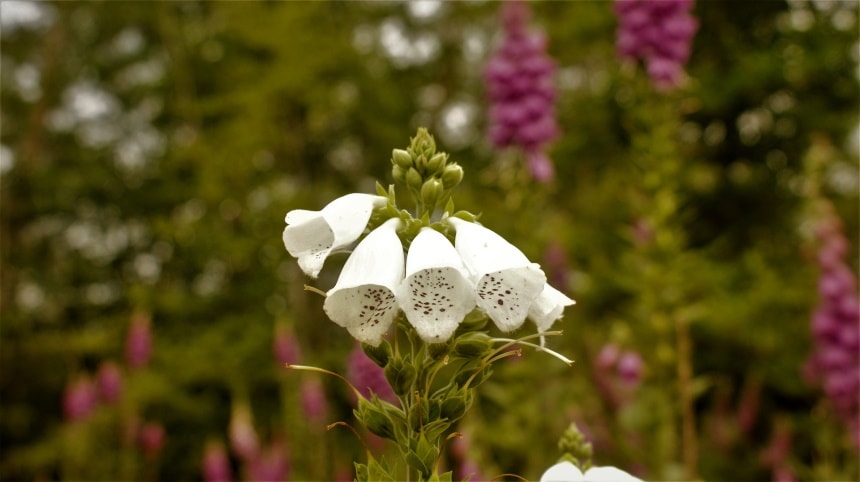
- USDA Hardiness Zone: 5–9
- Size: 2–5 feet tall and 1–2 feet wide
Some people are of the impression that tall plants will steal the spotlight from the roses. However, this is a misconception because when tall plants like foxgloves are paired with roses, they make a striking pair of beautiful borders next to long walkways.
Foxgloves produce tubular flowers that usually bloom in late summer. At full bloom, they produce white, pink, purple, and yellow flowers that can complement any rose subspecies.
This plant also does well in a range of light conditions. Some do better in a shaded area while some prefer the full glare of the sun to thrive. However, the climate in your locality will dictate how much sunlight your foxgloves will need.
Foxgloves may do well in hardiness zones 5–9, but they are very sensitive when exposed to prolonged high temperatures. Moreover, the plant can grow vibrant and tall in well-draining soil.
4. Lady’s Mantle (Alchemilla vulgaris orAlchemilla mollis)
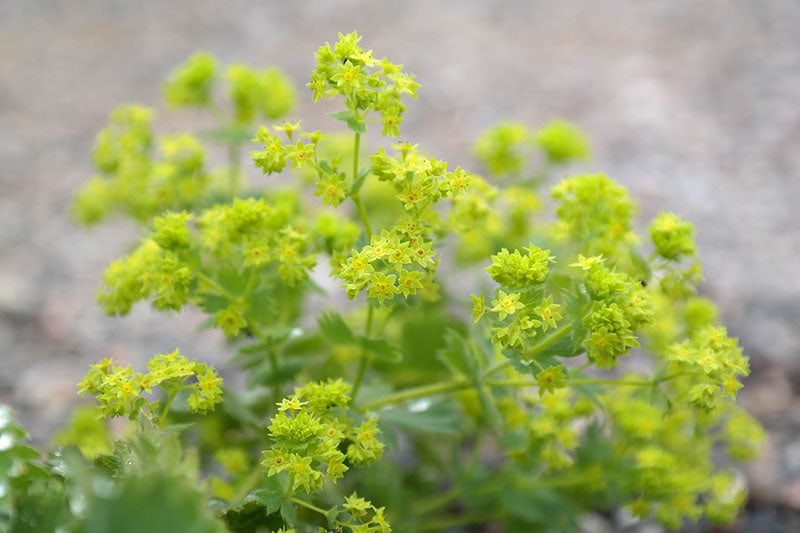
- USDA Hardiness Zone: 3–7
- Size: 2 feet tall, 3 feet wide
If you own one of those traditional cottage gardens full of roses, then you should consider planting a lady’s mantle for a perfect perennial paring. These plants are relatively short, covering the ground with small yellow flowers. Better yet, it is a beautiful border plant and is a suitable option for covering the bare stems of tall roses.
Lady’s mantle can do well in different light conditions; however, it thrives in partial shading. It can also grow in direct sunlight but you must be careful the plant doesn’t get sun scalded.
On matters of soil, this plant is very picky. It doesn’t do well in waterlogged soil, so you must plant it in well-draining soil. It is also well adapted to temperature changes but will need to be shaded in hotter climates.
5. Baby’s Breath (Alchemilla mollis)
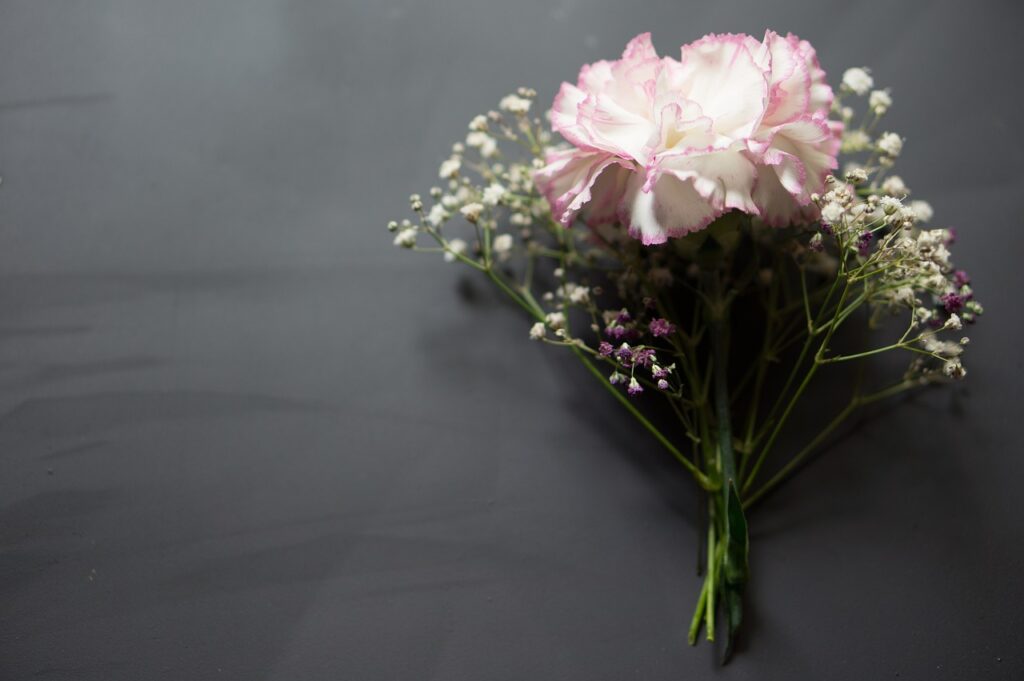
- USDA Hardiness Zone: 3–9
- Size: 6 inches to 8 feet (15 cm–4 m) tall and up to 4 feet (1.2 m) wide
Most floral arrangements and bouquets tend to have a baby’s breath. This plant species features pink and soft white flowers that seem to never grow old in home gardens. They are especially more aesthetically appealing when coupled with red or dark orange roses.
Baby’s Breath is a suitable companion plant for roses for those looking to create beautiful floral features in their garden with minimal effort. Just like most rose companion plants, this hardy perennial plant thrives in well-draining soil.
It also prefers direct sunlight and doesn’t require lots of water to thrive because it is drought resistant. So, it prefers drier climates as opposed to humid ones. Baby’s breath and roses make a beautiful pair in cut flower arrangements and your garden.
6. Shasta Daisy (Leucanthemum x superbum)
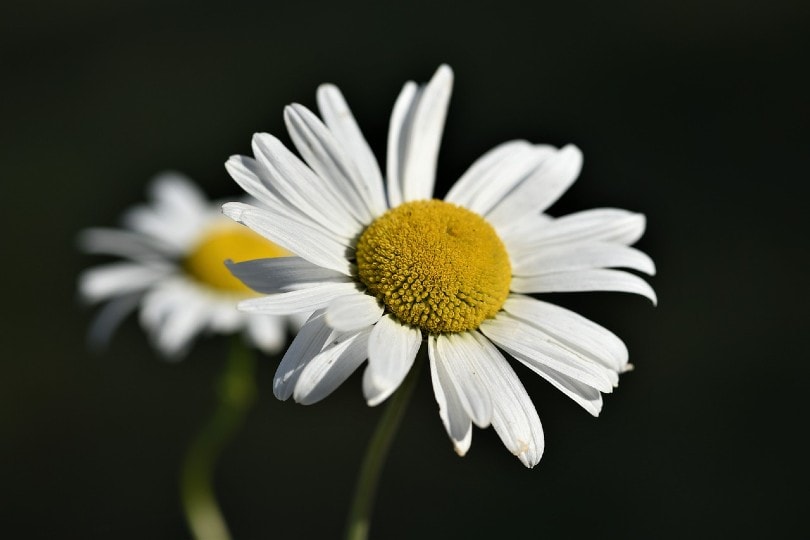
- USDA Hardiness Zone: 5–9
- Size: 18 to 30 inches tall and wide, which depends on the cultivar
Just like roses, Shasta daisies are a garden classic and feature white flowers with a yellow center. These plants are relatively easy to grow and can be coupled with roses of any color. They also thrive in hardiness zones 5 through 9 and prefer direct sun and well-draining soil.
Shasta daisy may be a drought-tolerant plant species, yet exposure to extreme cold and hot temperatures for a long period will stress the plant. If the temperatures are kept stable, Shasta daisies are easy to care for and maintain, requiring minimum water once they are established.
Companion Plants That Keep Pests Away
Some plants are known to have qualities that repel pests, and if you couple them with your roses, they can deter them from attacking your rose gardens. These plants produce scents that can be off-putting to pests such as aphids and rose beetles.
So, you can integrate a variety of flowers, herbs, and flowers instead of a single companion to control pests around your roses. These plants include:
7. Marigolds (Calendula officials, Tagetes erecta)
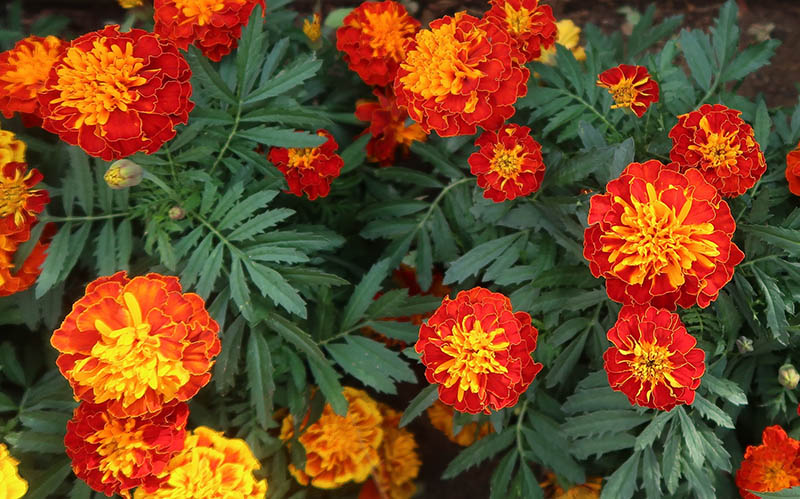
- USDA Hardiness Zone: 2–11
- Size: 1 to 4 feet height, 1 to 2 foot wide
Marigolds are perfect companion plants for roses. They not only share similar growing needs to roses, but they also attract insects that avail the most benefits to your garden. Therefore, they can be planted next to a vegetable patch to discourage hornworms and root-knot nematodes from attacking your rose plants.
When coupled with roses, marigolds attract pollinating insects such as bees while also strengthening the growth of rose plants. The orange, golden and yellow colors can make your rose bed dramatic and brighten the garden.
If the charming blooms and their pollinating benefits haven’t convinced you yet, then one simple characteristic might. Able to grow in hardiness zones 2 to 11, this plant can thrive in almost any climate. They are also easy to look after, prefer infrequent watering regimens (once a week at full maturity), and prefer full direct sun.
8. Parsley (Petroselinum crispum)
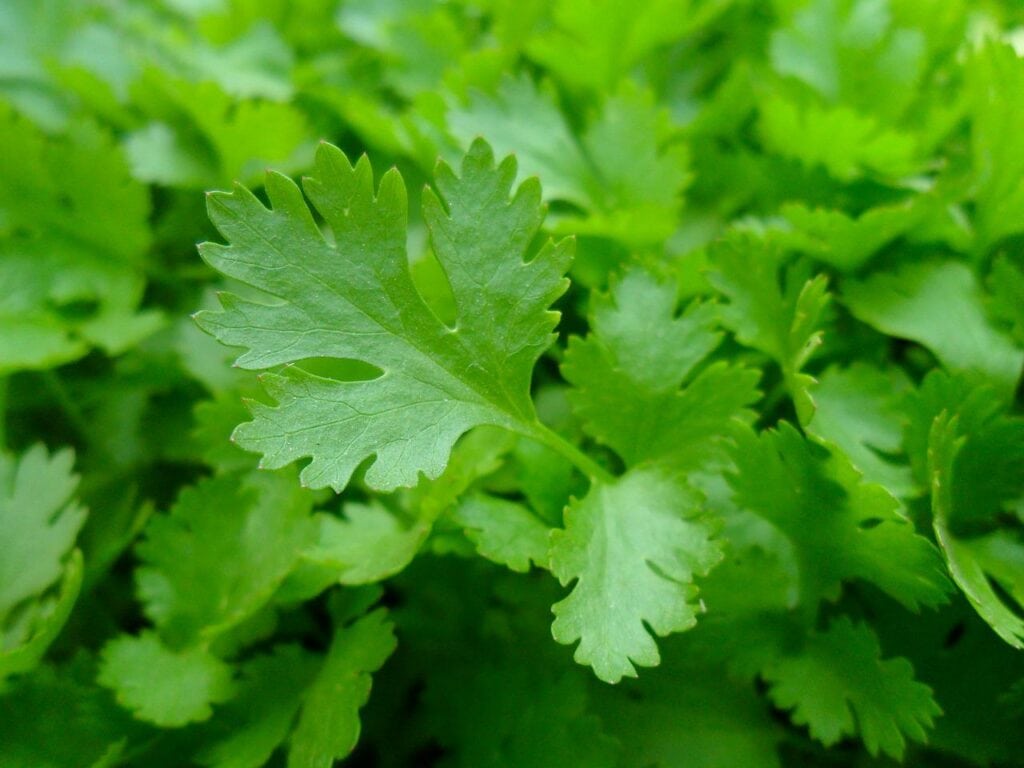
- USDA Hardiness Zone: 2–11
- Size:3 feet tall
A parsley and rose combination may not be the first thing that comes to mind when looking for a companion plant. Parsley is a culinary herb while roses are planted for aesthetic qualities. However, this combination works surprisingly very well as parsley presents many benefits to the rose plant.
If pests such as rose beetles and aphids are attacking your rose bushes, you can plant parsley next to your roses to deter these unwanted insects. Better yet, parsley can help enhance the sweet rose flower fragrance.
This herb can thrive in a wide range of climates and is not sensitive to humidity. Moreover, it thrives in moist, well-draining soil. Besides the frequent watering schedule, this herb is relatively easy to care for and can transform the look of your home garden when properly maintained.
9. Sage (Salvia officinalis)
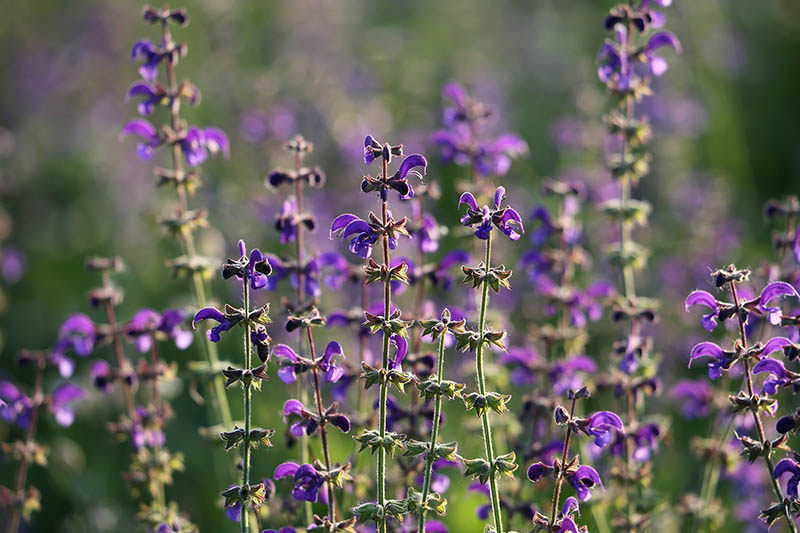
- USDA Hardiness Zone: 4–10
- Size: 2–5 feet tall, 2–3 feet wide
Sage is also another great companion plant that helps keep pests such as aphids from attacking your precious roses. Like lavender, when coupled with rose bushes, the sage purple blooms can also create an interesting contrast in your home garden.
Sage plants also help cover up gaps made by the tall rose stems as they grow. It also thrives under direct sunlight and requires dry well-draining soil. Moreover, it is a drought-resistant species, so you should be careful not to overwater.
Besides deterring pests, sage attracts a variety of beneficial insects to the rose plants too. You can expect hummingbirds, butterflies, and bees to visit your garden. For best results, consider planting sage as a border plant.
10. Pincushions (Leucospermum .Veldfire’)
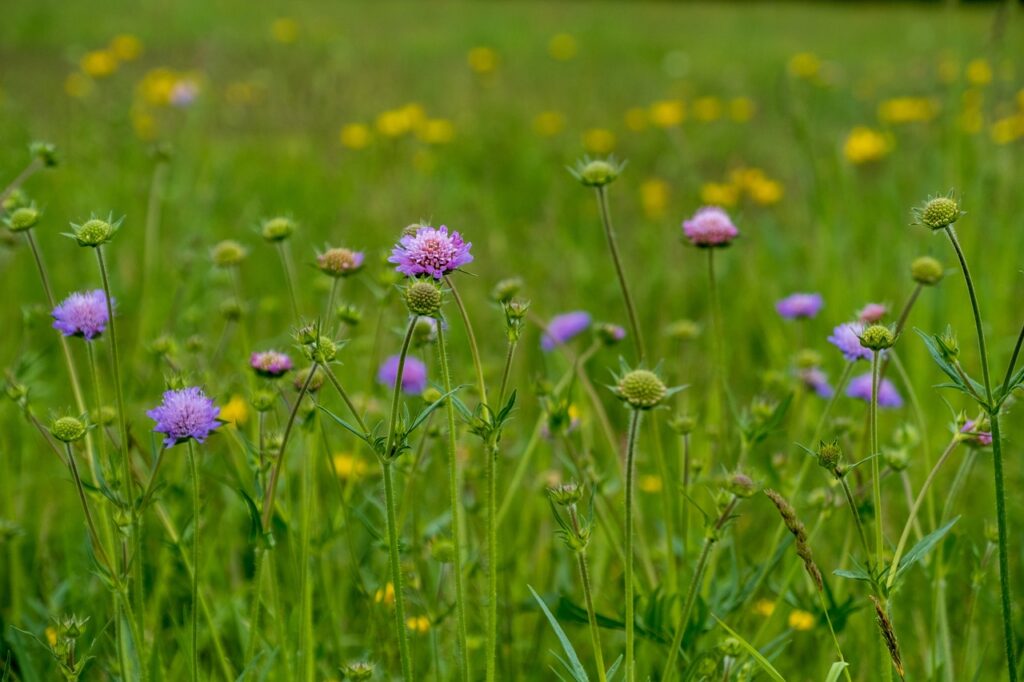
- USDA Hardiness Zone: 3–7
- Size: 4–10
Pincushions may be small plants, but when paired with roses, they can add life to your garden, especially at the base of rose plants. This plant species features many colors that usually peak along the lower level of your rose bushes. They are easy to care for and prefer temperate climates.
Since they thrive in hardiness zones 3 to 7, they don’t do well in extreme cold, heat, and high humidity. However, they need plenty of light to produce the majestic blooms pincushions are popular for. If you grow the plant in warmer climates, make sure you shade it from the hot afternoon sun. At full maturity, this plant can survive without water for a considerable period, but this will depend on the weather of your locality.
11. Alliums (.Mont Blanc’)
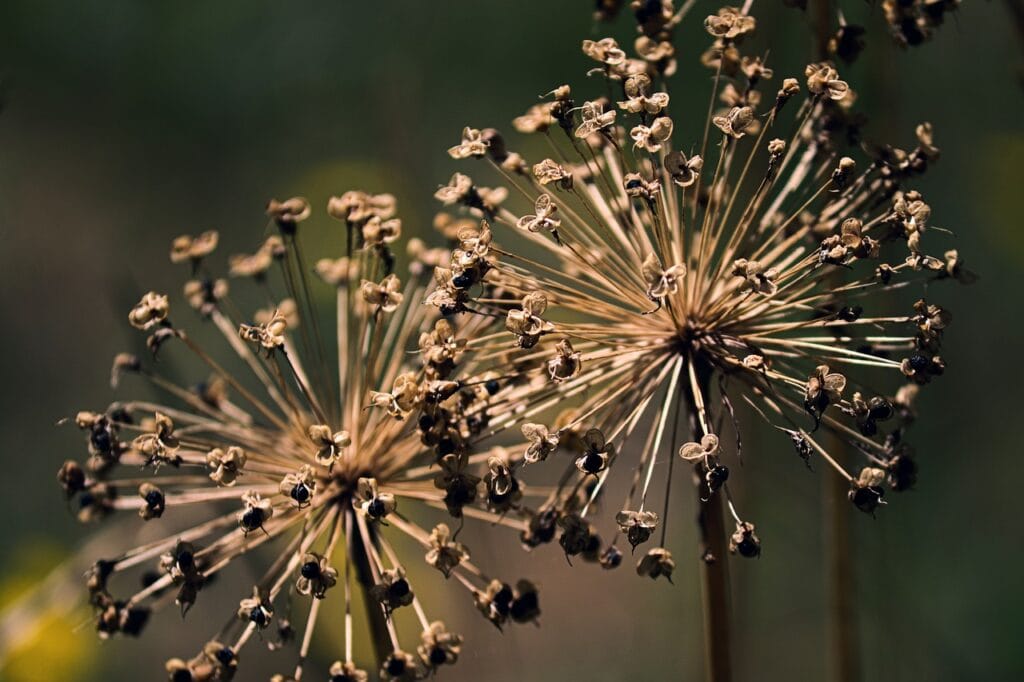
- USDA Hardiness Zone: 4-10
- Size: 1 to 2 feet height, 9–12 inches wide
A not-so-common but interesting pairing for your roses is alliums. Alliums encompass members of the onion family such as chive, shallot, onion, garlic, scallion, and leek. While most people might be skeptical to pair roses with alliums, seasoned growers regularly pair members of the Allium family with roses to ward off pests such as aphids that leave black spots on roses.
Alliums produce a pungent smell that is off-putting to many pests. They also prevent the spread of diseases such as black spot disease. Most gardeners recommend chives and garlic. Chive flowers are usually soft white and can complement any rose color beautifully. Chives are also relatively easy to take care of, only requiring well-draining soil and exposure to direct sun rays.
If you want to flaunt your rose bushes, consider pairing them with ornamental onions. You will not only get ingredients for your next meal, but you will also keep your rose beds looking stunning. Native to the Middle East, alliums are not picky about the type of soil they grow in. Just ensure that watering is frequent.
4 Tips for Growing Companion Plants alongside Roses
- Choose plants that complement the roses. When choosing a companion plant, you will want to go for a species that looks aesthetically appealing next to each other. So, you must consider the color of your companion plants. For instance, if your roses have bright yellow blossoms, consider adding a companion with pale purple flowers because they create a color contrast that would look great in a home garden.
- Choose plants that will help your roses to thrive. Companions shouldn’t just look good next to your roses; they should also help the plant to thrive and look beautiful as well. You can use companion plants with leafy foliage to help cover up those hideous areas of the bare stems of your roses before recovering.
- Choose plants that don’t compete with roses. As earlier mentioned, our companion plant should not be greedy enough to steal water and nutrients from your roses. Instead, they should work together and share the same growing conditions such as soil type, and sunlight. The companions shouldn’t also overcrowd your roses and are not affected by frequent fertilizing.
- Choose plants that deter pests. Pests are found in all gardens. Instead of relying on pesticides, you can use natural remedies to keep pests away from your roses. You can use natural herbs that not only complement the appearance of your rose bushes but prevent pests such as aphids from ravaging your garden.
 Conclusion
Conclusion
Companion planting is important in gardening because it helps accentuate the aesthetic appeal of the garden, attract beneficial insects and keep pests at bay. Coupling roses with different plant species avail various benefits that allow the rose to thrive and produce beautiful blooms.
Usually, gardeners who are new to rose growing look for one specific companion plant. However, instead of relying on one, you can plant a wide range of companion plants to attract different insects and birds to assist with pollination, and soil aeration, as well as keep pests at bay.
When planting companion plants, do not crowd your garden. Also ensure, the plants are not aggressive growers that can choke out your roses. Furthermore, do not couple roses with large trees as companion plants because they will inhibit their development.
- How to use Alliums as garden pesticides
- Marigolds and Root-Knot Nematodes by Charles Overstreet and Deborah Xavier
- Companion planting for a Vegetable Garden
- Plants that repel insects and garden pests
- What Grows well next to Knock out Roses?
- Everything you need to know about Alliums as companion plants
Featured Image Credit: lapping, Pixabay
Contents

 Why Plant Roses With Companion Plants?
Why Plant Roses With Companion Plants?